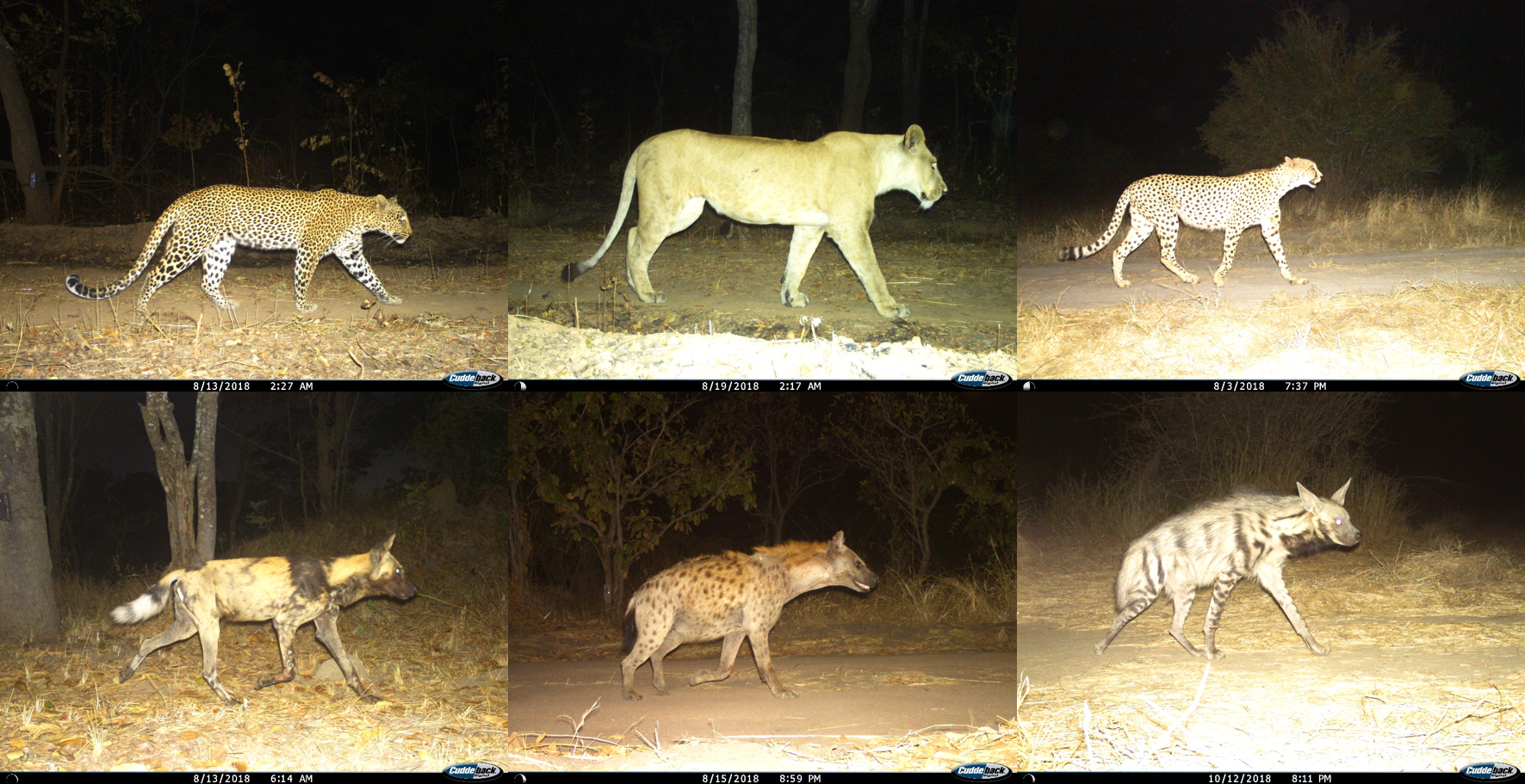News
Temporal partitioning and spatiotemporal avoidance among large carnivores in a human-impacted African landscape
Africa’s large carnivores are increasingly under threat from habitat fragmentation, conflict with humans, and declining prey populations. In addition to directly impacting survival, these pressures are likely to exacerbate already intense competition among large carnivore species, which can have important fitness consequences for individuals and populations. However, relatively little is still known about how human disturbance can impact large carnivore interactions, which may hinder effective conservation in areas where these species coexist alongside humans.
A new paper in PLOS ONE, led by WildCRU researcher Dr Charlotte Searle and co-authors at WildCRU, the Southern Tanzania Elephant Program (STEP), Chile’s Universidad Mayor, and the Tanzania Wildlife Research Institute (TAWIRI), helps address this knowledge gap by investigating coexistence mechanisms employed by large carnivores in a human-impacted landscape in Tanzania.
The study makes use of data from systematic camera trap surveys and a novel community camera-trapping programme established by Lion Landscapes Tanzania, to explore associations between leopard, lion, spotted hyaena, striped hyaena, African wild dog and cheetah in Tanzania’s Ruaha-Rungwa landscape. The study incorporates data from two habitat types within a National Park, a trophy hunting area, a community-managed area, and village land, to explore how these associations vary across gradients of anthropogenic impact and protection.
The findings of this research suggest that large carnivores in Ruaha-Rungwa modify their behaviour to coexist with other large carnivores and with humans. These adaptations are likely to become increasingly important as the availability of habitat and prey continue to decline across the continent, and large carnivores are forced into smaller, more fragmented areas. Research of this kind can be a valuable tool to help inform multi-species conservation plans in increasingly human-impacted landscapes, and secure Africa’s large carnivore diversity into the future.
Searle, C.E., Smit, J.B., Cusack, J.J., Strampelli, P., Grau, A., Mkuburo, L., Macdonald, D.W., Loveridge, A.J. and Dickman, A.J., 2021. Temporal partitioning and spatiotemporal avoidance among large carnivores in a human-impacted African landscape. PloS one, 16(9), p.e0256876.
This work was made possible by scholarship funding from the Oxford NERC Environmental Research DTP, and grants from National Geographic Society Early Career Grants, Cleveland Metroparks Zoo Africa Seed Grants, Chicago Zoological Society Chicago Board of Trade (CBOT) Endangered Species Fund, and Pittsburgh Zoo & PPG Aquarium Conservation & Sustainability Fund.






